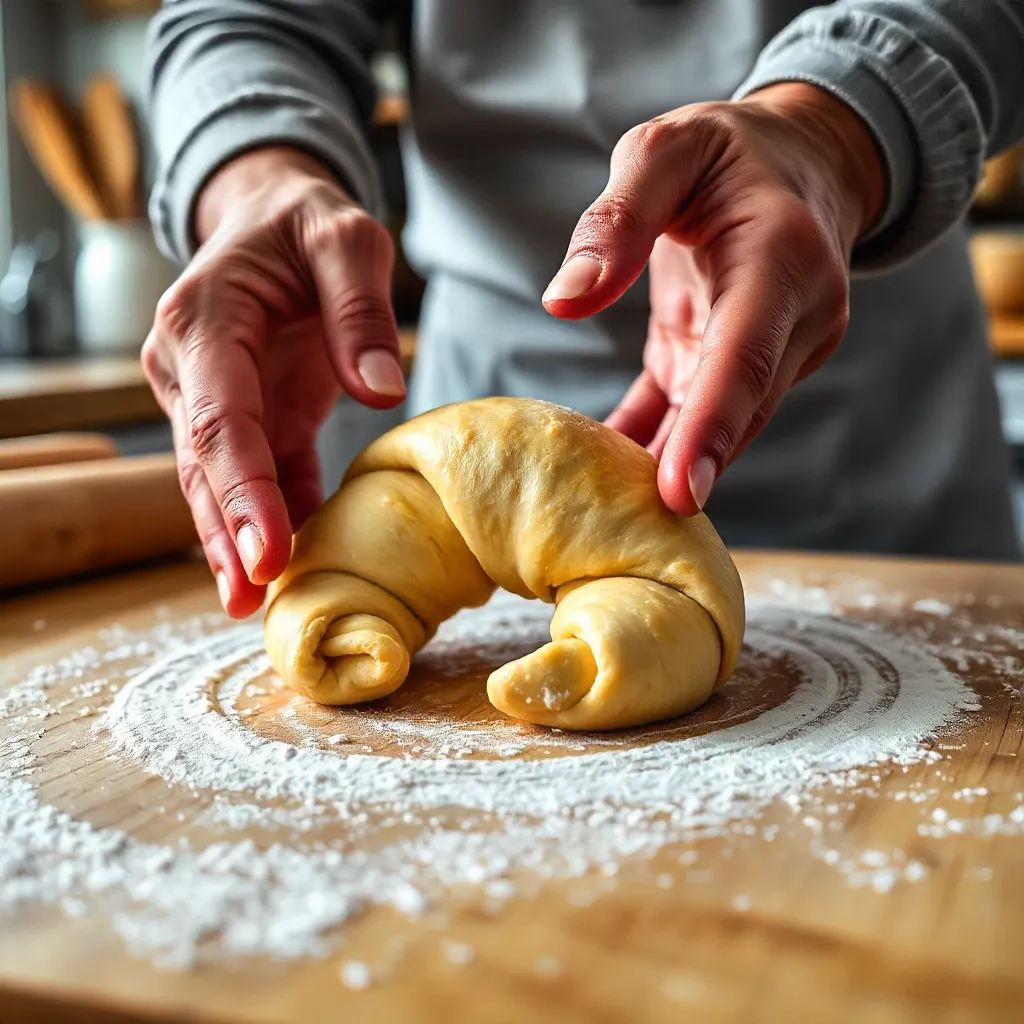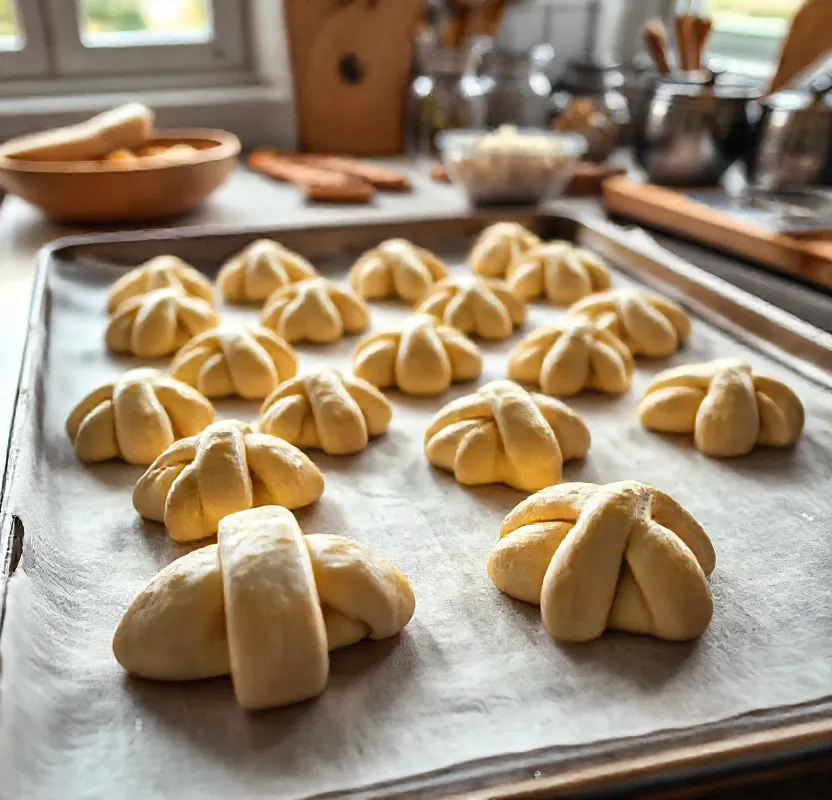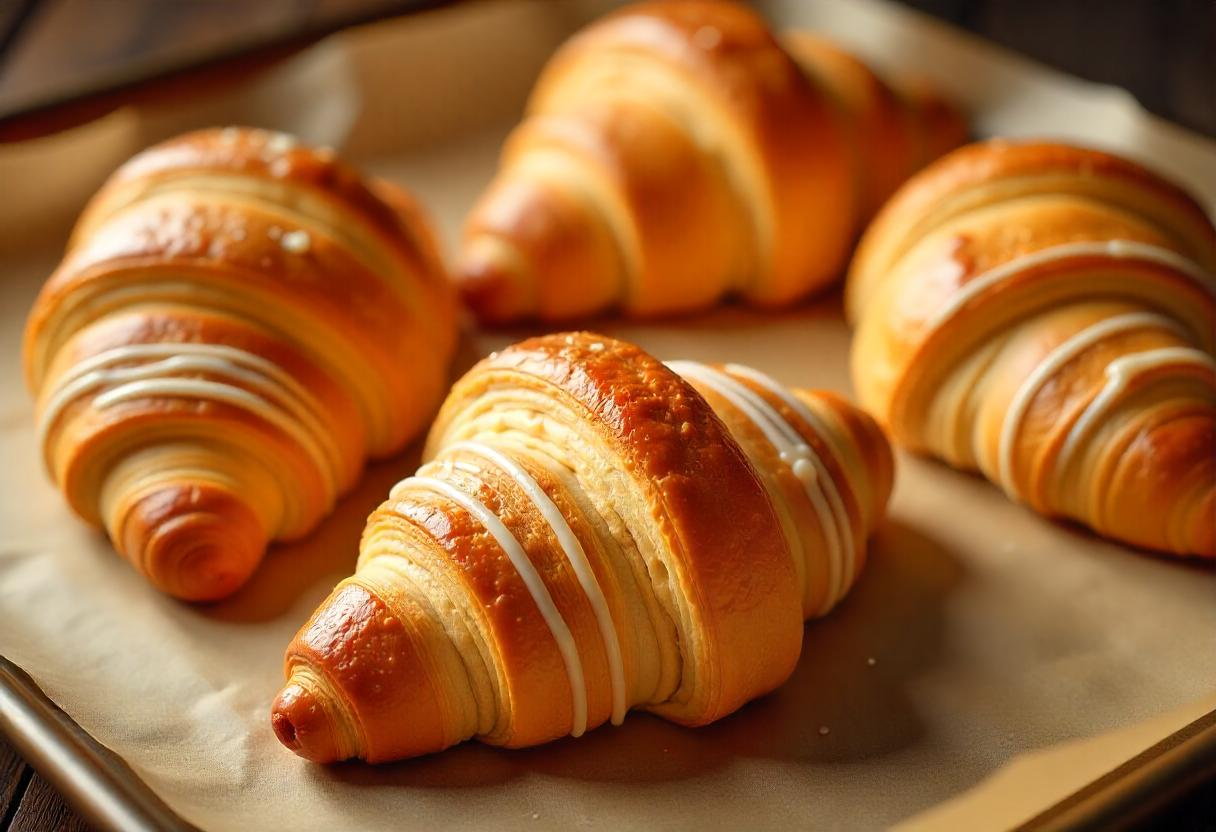Gipfeli, the Swiss version of a croissant, is a light, flaky, and mildly buttery pastry commonly enjoyed for breakfast in Switzerland. Unlike a French croissant, which is rich and layered with butter, Gipfeli is slightly denser, less buttery, and has a firmer texture. This makes it an excellent choice for those who love a crisp pastry but prefer a lighter taste.
In this article, we’ll cover:
✔ Step-by-step Swiss Gipfeli recipe
✔ The difference between a Gipfeli and a croissant
✔ Secrets to a perfect Gipfeli
✔ What is a Nussgipfel?
✔ Common croissant mistakes and how to avoid them
Let’s get baking!
Table of Contents
- What is a Gipfeli?
- Difference Between a Gipfeli and a Croissant
- Swiss Gipfeli Recipe (Step-by-Step)
- Tips for Making the Perfect Gipfeli
- What is a Nussgipfel?
- Common Mistakes When Making Croissants
- FAQs
- Conclusion
What is a Gipfeli?
A Gipfeli is a Swiss breakfast pastry that resembles a croissant but has a firmer texture, a slightly less buttery taste, and a golden brown crust. While croissants are made with laminated dough, Gipfeli dough is simpler, requiring fewer folds and less butter. This makes it easier to make at home while still delivering a crispy, satisfying pastry.
Gipfeli is often enjoyed plain or with jam, honey, or butter, making it a staple in Swiss households.
📌 Fun Fact: In German-speaking Switzerland, Gipfeli is the term for croissants, but traditional Swiss Gipfeli is denser and less flaky than the French version.
Difference Between a Gipfeli and a Croissant
| Feature | Gipfeli | Croissant |
|---|---|---|
| Butter Content | Less butter, lighter texture | High butter content, rich and flaky |
| Flakiness | Less flaky, more bread-like | Very flaky and airy |
| Texture | Slightly denser | Light and layered |
| Taste | Mildly buttery | Rich, buttery, slightly sweet |
| How It’s Made | Simple dough, minimal lamination | Laminated dough with multiple folds |
| Eating Style | Often served plain or with jam | Can be plain, filled, or served with chocolate |
Swiss Gipfeli Recipe (Step-by-Step Guide)
Ingredients:
- 500g all-purpose flour
- 250ml warm milk
- 50g butter (softened)
- 25g fresh yeast (or 7g dry yeast)
- 30g sugar
- 1 tsp salt
- 1 egg (for brushing)
Instructions:
Step 1: Activate the Yeast
- In a small bowl, dissolve yeast in warm milk with sugar.
- Let it sit for 10 minutes until foamy.
Step 2: Make the Dough
- In a large mixing bowl, combine flour and salt.
- Add the yeast mixture and softened butter.
- Knead until the dough is smooth and elastic (about 8-10 minutes).
Step 3: First Rise
- Cover the dough with a clean towel and let it rise for 1 hour or until doubled in size.
Step 4: Shape the Gipfeli

- Roll the dough into a large rectangle.
- Cut into triangles and roll each one from the base to the tip, forming a crescent shape.
Step 5: Second Rise

- Place the shaped Gipfeli on a baking sheet lined with parchment paper.
- Cover and let them rise for 30 minutes.
Step 6: Bake the Gipfeli
- Preheat the oven to 200°C (392°F).
- Brush the Gipfeli with a beaten egg for a golden finish.
- Bake for 15-18 minutes until golden brown.
✔ Serve warm with butter, honey, or jam!

Tips for Making the Perfect Gipfeli
- Use high-quality flour for the best texture.
- Let the dough rise properly – don’t rush the process.
- Brush with egg wash before baking for a golden, shiny crust.
- Store leftovers in an airtight container and reheat in the oven at 160°C (320°F) for 5 minutes.
What is a Nussgipfel?
A Nussgipfel is a Swiss pastry filled with a sweet nut mixture, typically made with ground hazelnuts, sugar, and cream. Unlike traditional Gipfeli, Nussgipfel has a rich, nutty filling inside and is often topped with powdered sugar or a sugar glaze.
Common Mistakes When Making Croissants
- Butter Melting Into the Dough – Always chill the dough between folds.
- Overproofing – Too much rise time can cause croissants to collapse.
- Uneven Rolling – Thin or thick sections will cause uneven baking.
- Not Enough Folds – Fewer layers mean less flakiness.
FAQs
1. Can I make Gipfeli in advance?
Yes! You can prepare the dough the night before and refrigerate it.
2. What’s the best flour for Gipfeli?
All-purpose flour works well, but for a lighter texture, you can use bread flour.
3. Can I freeze Gipfeli?
Yes! Freeze them after shaping, then bake directly from frozen.
4. What can I serve with Gipfeli?
Try butter, honey, jam, or a dusting of powdered sugar.
Conclusion
Swiss Gipfeli is an easy-to-make, delicious breakfast pastry that offers a lighter alternative to croissants. Whether you enjoy it with jam, butter, or honey, it’s a fantastic treat for any occasion!
Try this recipe and let us know how it turns out!
